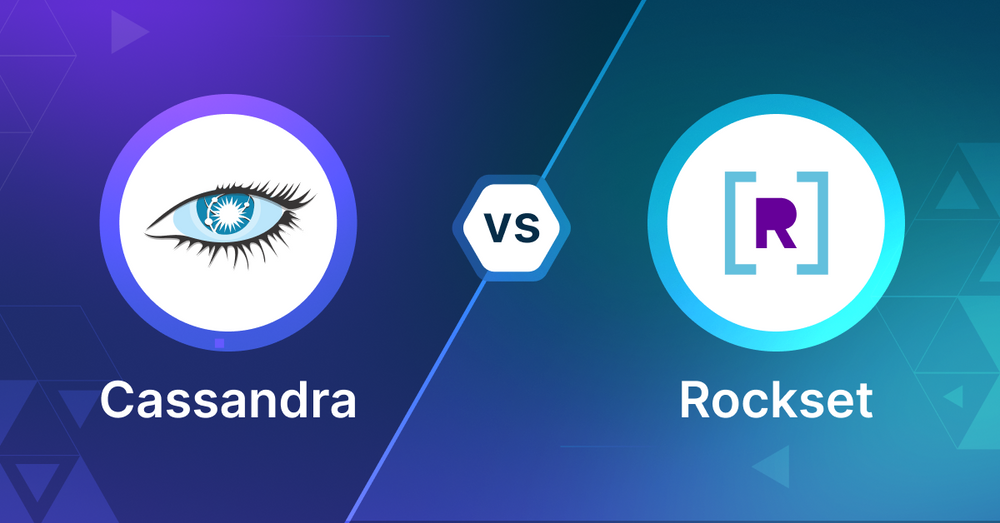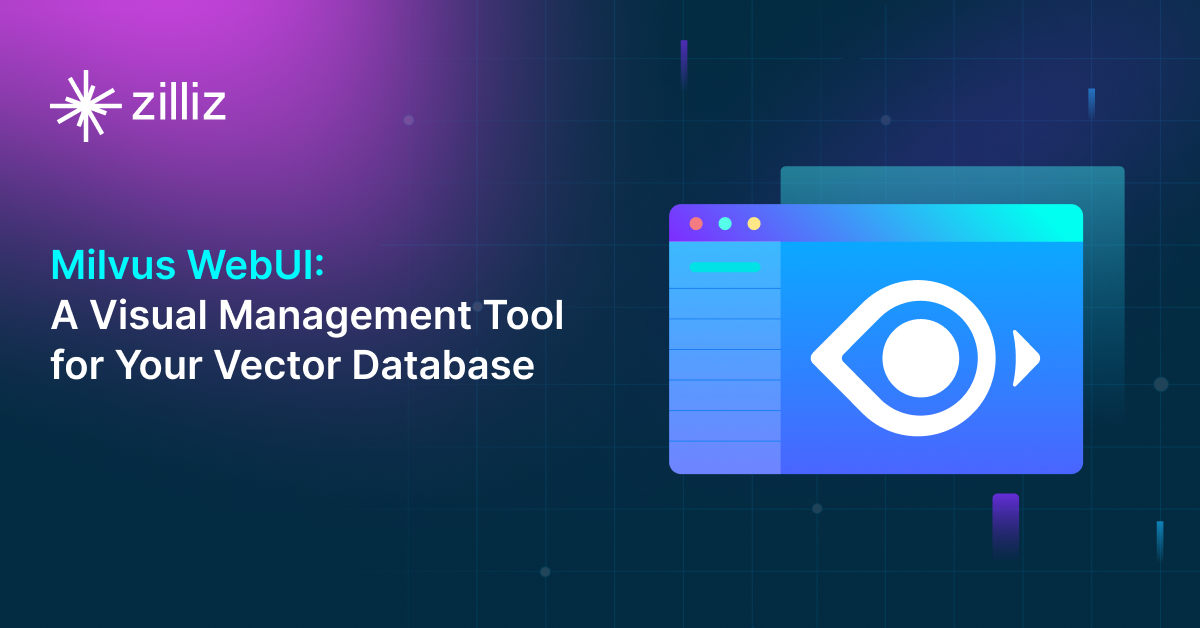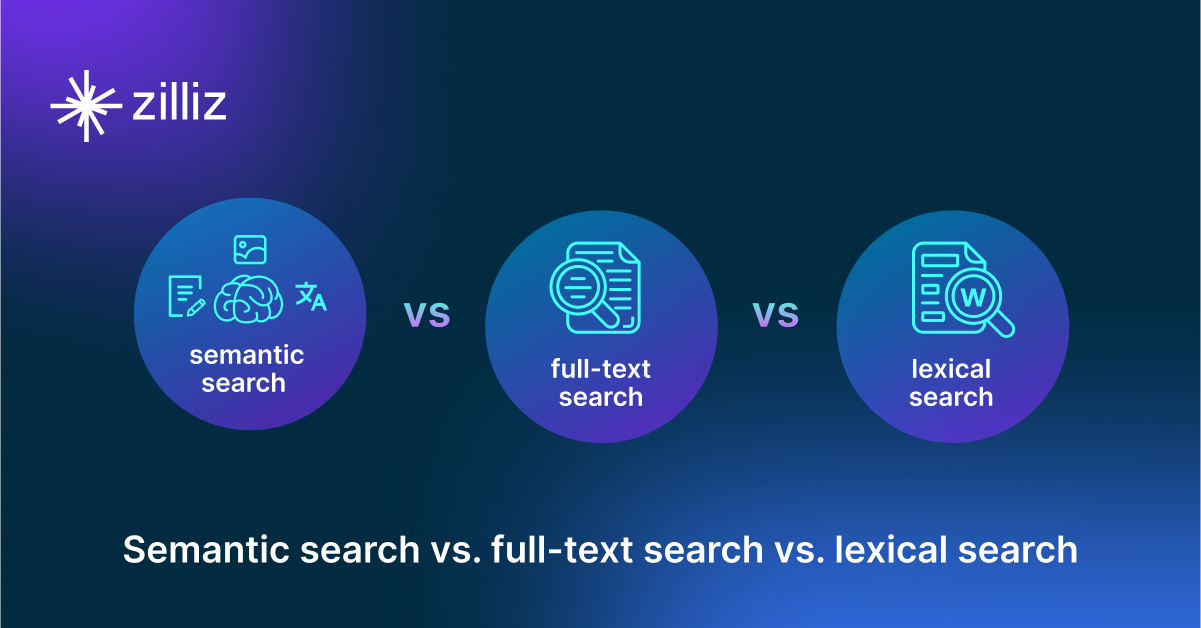Apache Cassandra vs. Rockset: Choosing the Right Vector Database for Your AI Applications

As AI-driven applications become more prevalent, developers and engineers face the challenge of selecting the right database to handle vector data efficiently. Two popular options in this space are Apache Cassandra and Rockset. This article compares these technologies to help you make an informed decision for your vector database needs.
What is a Vector Database?
Before we compare Apache Cassandra and Rockset, let's first explore the concept of vector databases.
A vector database is specifically designed to store and query high-dimensional vector embeddings, which are numerical representations of unstructured data. These vectors encode complex information, such as text's semantic meaning, images' visual features, or product attributes. By enabling efficient similarity searches, vector databases play a pivotal role in AI applications, allowing for more advanced data analysis and retrieval.
Vector databases are adopted in many use cases, including e-commerce product recommendations, content discovery platforms, anomaly detection in cybersecurity, medical image analysis, and natural language processing (NLP) tasks. They also play a crucial role in Retrieval Augmented Generation (RAG), a technique that enhances the performance of large language models (LLMs) by providing external knowledge to reduce issues like AI hallucinations.
There are many types of vector databases available in the market, including:
- Purpose-built vector databases such as Milvus, Zilliz Cloud (fully managed Milvus)
- Vector search libraries such as Faiss and Annoy.
- Lightweight vector databases such as Chroma and Milvus Lite.
- Traditional databases with vector search add-ons capable of performing small-scale vector searches.
Cassandra and Rockset represent different approaches to vector databases. Cassandra is a traditional database that has evolved to include vector search capabilities and Rockset, on the other hand, is a search and analytics database with added vector search capabilities.
Apache Cassandra: Overview and Core Technology
Apache Cassandra is an open-source, distributed NoSQL database known for its scalability and availability. Cassandra's features include a masterless architecture for availability, scalability, tunable consistency, and a flexible data model. With the release of Cassandra 5.0, it now supports vector embeddings and vector similarity search through its Storage-Attached Indexes (SAI) feature. While this integration allows Cassandra to handle vector data, it's important to note that vector search is implemented as an extension of Cassandra's existing architecture rather than a native feature.
Cassandra's vector search functionality is built on its existing architecture. It allows users to store vector embeddings alongside other data and perform similarity searches. This integration enables Cassandra to support AI-driven applications while maintaining its strengths in handling large-scale, distributed data.
A key component of Cassandra's vector search is Storage-Attached Indexes (SAI). SAI is a highly scalable and globally distributed index that adds column-level indexes to any vector data type column. It provides high I/O throughput for Vector Search databases and other search indexing. SAI offers extensive indexing functionality, capable of indexing queries and content (including large inputs like documents, words, and images) to capture semantics.
Vector Search is the first instance of validating the extensibility of SAI, leveraging its new modularity. This combination of Vector Search and SAI enhances Cassandra's capabilities in handling AI and machine learning workloads, making it a strong contender in the vector database space.
Rockset: Overview and Core Technology
Rockset is a real-time search and analytics database that handles structured and unstructured data, including vector embeddings. Its core strength lies in its ability to ingest, index, and query data in real time, making it suitable for applications that require up-to-the-second insights. Rockset supports both streaming and bulk data ingestion, with the ability to process high-velocity event streams and change data capture (CDC) feeds within 1-2 seconds.
One of Rockset's key features is its Converged Indexing technology, which is built on mutable RocksDB. This allows for in-place updates of vectors and metadata, making it highly efficient for frequently changing scenarios. Rockset can handle document sizes up to 40MB and supports vector dimensionality of up to 200,000, making it suitable for a wide range of vector embedding applications.
Rockset integrates vector search capabilities as part of its core functionality. It supports both K-Nearest Neighbors (KNN) and Approximate Nearest Neighbors (ANN) search methods, using a distributed FAISS index for scalability. Rockset's approach is algorithm-agnostic, allowing for flexibility in search implementations. Its cost-based optimizer can dynamically choose between KNN and ANN search methods for optimal efficiency.
What sets Rockset apart in terms of vector search is its Converged Index, which combines search, ANN, columnar, and row indexes into a single structure. This allows for efficiently handling a wide range of query patterns out of the box. Rockset also supports metadata filtering and hybrid search, with its optimizer determining the most efficient query execution path. It can perform searches across multiple ANN fields, support multi-modal models, and offer SQL and REST APIs for query interface flexibility.
Key Differences
Search Methodology
Cassandra uses Storage-Attached Indexes (SAI) for vector search, extending its existing architecture. Rockset employs both KNN and ANN search methods using a distributed FAISS index, with a cost-based optimizer that dynamically chooses the most efficient method.
Data Handling
Cassandra excels in managing large-scale structured and semi-structured data, allowing vector embeddings to be stored alongside other data types. Rockset's Converged Indexing technology enables efficient handling of structured, semi-structured, and unstructured data, including vector embeddings, with support for in-place updates.
Scalability and Performance
Cassandra's masterless architecture allows for linear scalability across distributed systems. Rockset separates compute-storage and compute-compute, allowing independent scaling of ingestion, indexing, and query serving for better performance and cost-efficiency.
Flexibility and Customization
Cassandra provides flexibility through its SAI feature within its existing query language. Rockset offers a rich set of query options through its Converged Index, which supports complex queries that combine vector search with traditional filtering using SQL and REST APIs.
Integration and Ecosystem
Cassandra has a mature ecosystem and integrates well with big data tools. Rockset is designed for cloud environments and supports integrating various data sources and AI platforms for embedding generation.
Ease of Use
Cassandra's distributed nature makes its learning curve steeper. However, Rockset's managed service approach may make it easier to set up and use, especially for real-time analytics and vector search applications.
Cost Considerations
Cassandra may have higher operational costs for large-scale deployments. Rockset's cost model is based on compute usage, and it can scale up and down on demand for better price performance.
Security Features
Both systems offer security features, but specific comparisons would require more detailed information about Rockset's security capabilities.
When to Choose Rockset or Apache Cassandra
Apache Cassandra: Choose Cassandra when dealing with large-scale distributed data that requires vector search capabilities alongside other data types. It's particularly suitable for scenarios involving massive datasets that must be distributed across multiple data centers. Cassandra is ideal for applications that require high availability, fault tolerance, and tunable consistency. It's a good fit for projects that need to store and query vector embeddings as part of a larger, diverse dataset, especially when the vector search extends existing data operations rather than the primary focus. Cassandra's strengths in handling structured and semi-structured data make it suitable for complex, data-intensive applications that require vector search as an additional feature within its flexible data model.
Rockset: Opt for Rockset when your primary focus is on real-time search and analytics, especially involving vector embeddings. It's the better choice for applications requiring up-to-the-second insights and the ability to quickly ingest and index high-velocity event streams and CDC feeds. Rockset is particularly suitable for situations where data frequently changes, thanks to its support for in-place updates of vectors and metadata. Choose Rockset when you need to handle a wide range of vector embedding applications with support for high dimensionality (up to 200,000). It's preferable when you require flexible vector search capabilities, including both KNN and ANN methods, and must perform complex queries that combine vector similarity with metadata filtering. Rockset is also a good choice when you can scale compute resources independently for ingestion, indexing, and query serving in cloud environments.
Conclusion
In conclusion, Apache Cassandra and Rockset both offer powerful capabilities for handling vector data, but with distinct strengths suited to different use cases. Cassandra excels in managing large-scale distributed data, offering high availability, fault tolerance, and scalability across multiple data centers. Its Storage-Attached Indexes (SAI) feature allows it to integrate vector search into its existing architecture, making it suitable for applications that incorporate vector embeddings into a broader data management strategy. Rocket, on the other hand, shines in real-time search and analytics scenarios with its ability to quickly ingest and index high-velocity data streams, support for in-place updates, and flexible vector search capabilities through its Converged Indexing technology. The choice between these technologies should be driven by specific project requirements, such as the scale of data distribution needed, the importance of real-time processing, the complexity of vector operations required, and how vector search fits into the overall data architecture of the application.
While this article provides an overview of Cassandra and Rockset, it's crucial to evaluate these databases based on your specific use case. One tool that can assist in this process is VectorDBBench, an open-source benchmarking tool designed for comparing vector database performance. Ultimately, thorough benchmarking with specific datasets and query patterns will be essential in making an informed decision between these two powerful yet distinct approaches to vector search in distributed database systems.
Using Open-source VectorDBBench to Evaluate and Compare Vector Databases on Your Own
VectorDBBench is an open-source benchmarking tool designed for users who require high-performance data storage and retrieval systems, particularly vector databases. This tool allows users to test and compare the performance of different vector database systems such as Milvus and Zilliz Cloud (the managed Milvus) using their own datasets and determine the most suitable one for their use cases. Using VectorDBBench, users can make informed decisions based on the actual vector database performance rather than relying on marketing claims or anecdotal evidence.
VectorDBBench is written in Python and licensed under the MIT open-source license, meaning anyone can freely use, modify, and distribute it. The tool is actively maintained by a community of developers committed to improving its features and performance.
Download VectorDBBench from its GitHub repository to reproduce our benchmark results or obtain performance results on your own datasets.
Take a quick look at the performance of mainstream vector databases on the VectorDBBench Leaderboard.
Read the following blogs to learn more about vector database evaluation.
Further Resources about VectorDB, GenAI, and ML
- What is a Vector Database?
- Apache Cassandra: Overview and Core Technology
- Rockset: Overview and Core Technology
- Key Differences
- Conclusion
- Using Open-source VectorDBBench to Evaluate and Compare Vector Databases on Your Own
- Further Resources about VectorDB, GenAI, and ML
Content
Start Free, Scale Easily
Try the fully-managed vector database built for your GenAI applications.
Try Zilliz Cloud for FreeKeep Reading

Zilliz Cloud Update: Smarter Autoscaling for Cost Savings, Stronger Compliance with Audit Logs, and More
Take a look at the latest release of Zilliz Cloud.

Milvus WebUI: A Visual Management Tool for Your Vector Database
Milvus WebUI is a built-in GUI introduced in Milvus v2.5 for system observability. WebUI comes pre-installed with your Milvus instance and offers immediate access to critical system metrics and management features.

Semantic Search vs. Lexical Search vs. Full-text Search
Lexical search offers exact term matching; full-text search allows for fuzzy matching; semantic search understands context and intent.
The Definitive Guide to Choosing a Vector Database
Overwhelmed by all the options? Learn key features to look for & how to evaluate with your own data. Choose with confidence.